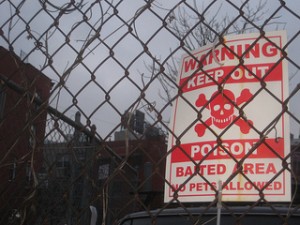Posted by The San Francisco Dog Walker
Does your dog love to chase after tennis balls? Even, perhaps, a little obsessed about it?

Something you need to keep in mind is that a tennis ball is made of abrasive material that can quickly wear down your dog’s teeth. Some dogs love them so much that their teeth have ground down to little nubs. This is important because a dog must have their teeth last a lifetime and you definately want to protect them whenever you can.
If you want to nip this problem in the bud, change to rubber chuck-it balls. Rubber does not have the abrasive properties like the green tennis balls you see at all the dog parks. Why do most people not change to rubber? Not all dogs have problems with tennis balls, so just keep an eye on your dog’s teeth to determine if you need to make any adjustments. Also, they are costly, especially if your dog likes to leave them behind in the bushes. If your balls have squeakers, also keep an eye open to make sure your dog does not chew the ball to get the parts out. They can chock on the squeaker parts inside the ball, if they get them out.



